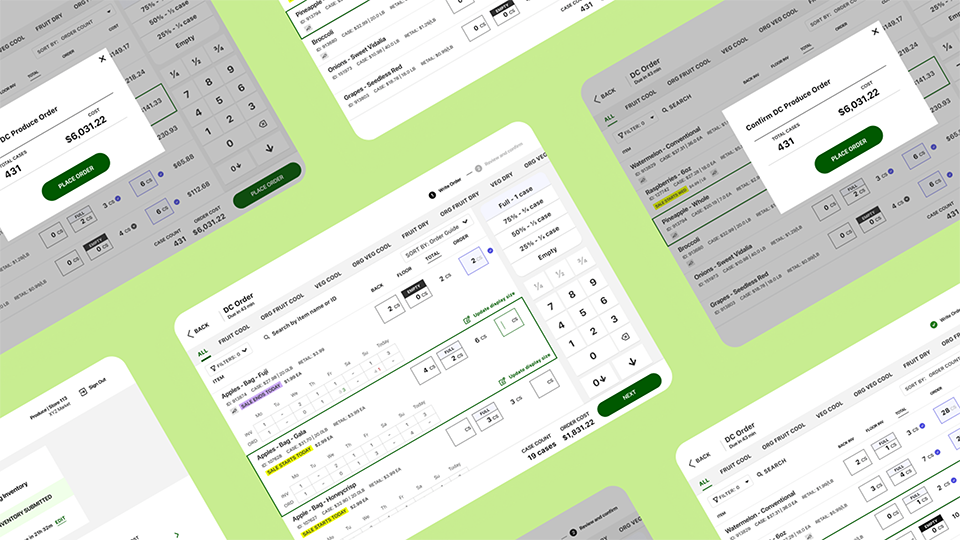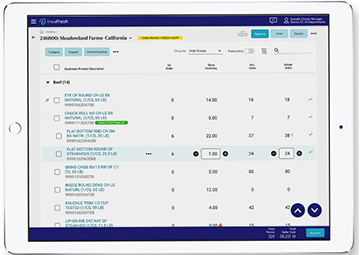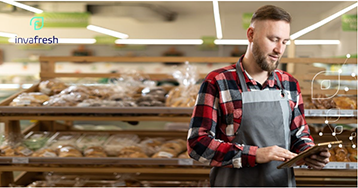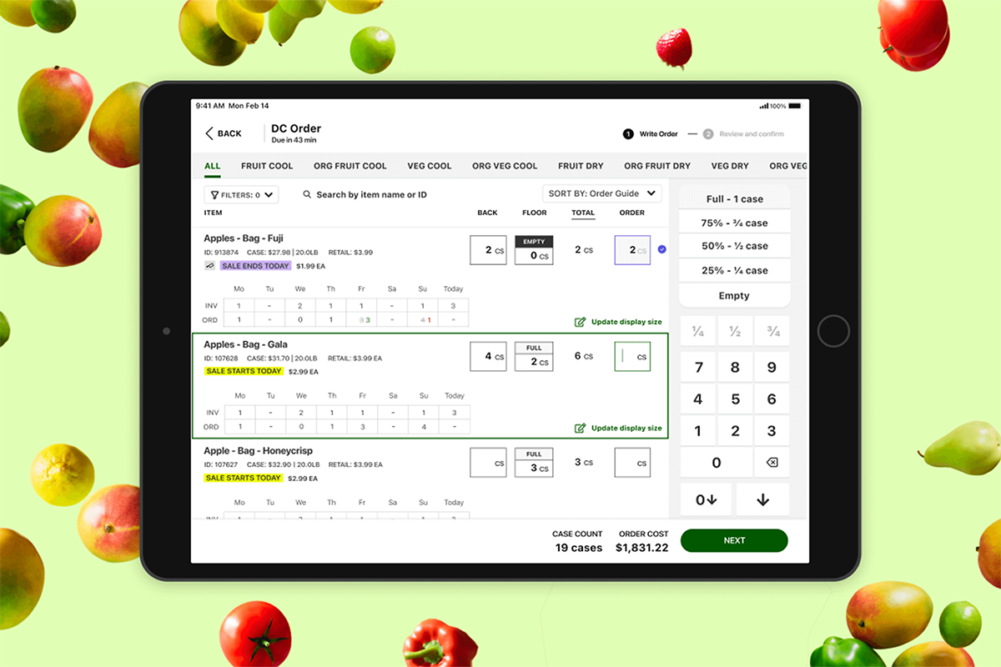There’s one word that may best sum up the process of deciding what kinds of fresh foods to order, how much and when: uncertainty.
While center-store ordering is typically a fairly straightforward proposition, when grocery retailers are ordering perishable foods sold in the fresh perimeter, shelf life, weather, growing conditions, supply chain issues and a host of other factors enter into the equation, making it far harder to get the ordering process right.
Older ordering systems modeled on center-store – and even some systems that are tailored for fresh – operate using an arithmetical, or rules-based, approach to problem solving, said Nathan Fenner, president and co-founder of San Francisco-based Afresh Technologies.
Such an approach, he said, cannot take into account the uncertainty inherent in fresh ordering.
“The fundamental assumption in legacy systems is that all inputs are correct. They all treat their data inputs as gospel. But data in fresh is never correct.”
Afresh’s AI-based system, by contrast, is built using more recent technology whose problem solving is probability-based, considering a range of possibilities that more accurately mirrors the uncertainty of fresh ordering, Fenner said.
 Source: Afresh Technologies
Source: Afresh Technologies
“The way traditional systems work is by generating demand forecasts. Our system starts at demand forecasts. It’s linear regressions vs. machine learning, which is not an incremental difference, it’s a difference of type.”
In February, Afresh announced that it had expanded its fresh ordering and other services from produce to other corners of the fresh perimeter — meat, seafood, deli and retail foodservice.
To date, Afresh customers have seen transformational benefits in their produce departments, including an average 3% sales lift and 25% shrink reduction, which adds up to a collective 31 million pounds of food waste prevented so far, Fenner said.
Current customers including CUB, Fresh Thyme, and Heinen’s have signed on for the expansion of Afresh into other fresh departments.
“We are thrilled to be launching our meat, seafood, deli, and foodservice products this year,” said Matt Schwartz, CEO and co-founder of Afresh. “After proving our ability to add value in thousands of stores in produce, we have been overwhelmed by demand to launch the Afresh platform in other fresh departments. We’re taking the same approach of bringing easy-to-use, AI-powered tools to these historically underserved, strategically critical departments.”
Afresh’s user-centric approach will prove particularly useful as the Afresh platform expands to the meat department, Schwartz said. In a recent report, 48% of US retailers said the meat department presents the biggest challenges of all fresh categories for the year ahead.
With Afresh, store teams can save time by placing pre-filled orders for packaged fresh products with longer shelf lives like bacon. They can also increase order accuracy with intelligent recommendations for high-value, hyper-perishable items like fresh poultry, boosting in-stock rates and profits while reducing labor overhead.
“Afresh has been an incredibly supportive and proactive partner as we’ve implemented their produce solution across all of our corporate stores,” said Luke Anderson, chief information officer at CUB. “Having a lightweight, fully comprehensive solution that connects across other fresh departments should unlock even more benefits for our customers and store teams.”
Better in the cloud
Toronto-based Invafresh continues to expand the functionality and usability of its Fresh Retail Platform, which many companies rely on for their fresh ordering needs, said Stephen Midgley, the company’s vice president of marketing.
Recent upgrades include enhancements to its cloud-native user interface that allows grocery retailers to use any device on any browser, anywhere.
 Source: Invafresh
Source: Invafresh“We’re focused on increasing productivity and adoption with enhanced workflows and cards that will equip our customers with the right data and actionable insights to make informed decisions quickly and accurately,” Midgley said.
More than 300 grocery retailers in 18 countries are currently using the Invafresh platform.
Looking ahead, as labor challenges continue to adversely impact the industry, Invafresh is focused on increasing operational efficiency, Midgley said.
“The use of automation technologies within grocery retail, and fresh ordering specifically, has gained significant traction.”
Such technology allows for increased productivity – at both the store and corporate level – as the focus is on providing the right information to the right person, at the right time.
Automation, Midgley added, enables grocers to do more with less and ensures that resources are allocated as efficiently as possible. The result is fresher products, less stockouts, reduced shrink, optimized labor process, and ultimately, an improved shopping experience.
The fresh ordering capabilities within Invafresh’s Fresh Retail Platform, and its Fresh Retail Platform as a whole, Midgley said, are unique because they provide users with regular real-time data updates for every item in store.
 Source: Invafresh
Source: Invafresh“A single AI forecast engine powers our features, including Recipe Management and Production Planning, so users receive recommendations and insights from a single source of truth.”
Flexible planning is also important, he added. Fresh Ordering can be autonomous and or adjusted depending on a store’s unique needs. Invafresh’s focus to provide the right information to the right people at the right time is imperative to the success of the company’s customers.

